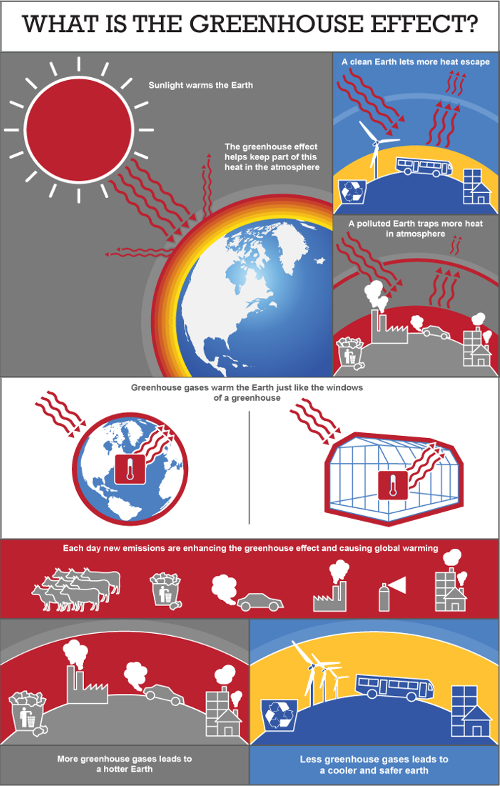The greenhouse effect increases the temperature of the Earth by trapping heat in our atmosphere. This keeps the temperature of the Earth higher than it would be if direct heating by the Sun was the only source of warming. When sunlight reaches the surface of the Earth, some of it is absorbed which warms the ground and some bounces back to space as heat. Greenhouse gases that are in the atmosphere absorb and then redirect some of this heat back towards the Earth.

To understand exactly how the greenhouse effect works, imagine the following: a warm, sunny day where the sun shines bright on the Earth. This sunlight (shortwave radiation) passes into the planet's atmosphere and warms the Earth. Part of this energy is absorbed by the Earth's surface, transformed into heat (longwave radiation) and radiated back towards space. But as this heat goes up through the atmosphere, some of it is trapped by the different greenhouse gases and doesn't escape into space. This in turn warms up the Earth's atmosphere; just like the windows of a greenhouse that lets light in and keeps the heat within to warm the plants growing inside.
Since some of the heat can't escape into space, it continues to add up which then warms up the Earth. This is what we call the greenhouse effect. So the more greenhouse gases you have in the atmosphere, the more heat stays on Earth.
If the amount of energy from the sun and the amount of greenhouse gases in the atmosphere remain the same, then the average temperature on Earth will also be constant. But this is no longer the case. The amount of greenhouse gases in our atmosphere is the highest it has been in the last 3 million years. This is enhancing the greenhouse effect and making the Earth warmer than normal, which is affecting the planet's weather patterns, creating global warming and climate change.
Feel free to this infographic as a poster or graphic to spread the word!

